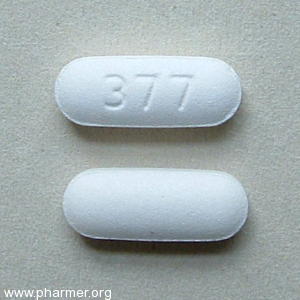Tramadol

Click for larger image
Tramadol (INN) (pronounced /'træm?d?l/) is an
atypical opioid which is a centrally acting analgesic, used for treating
moderate to severe pain. It is a synthetic agent, as a 4-phenyl-piperidine
analogue of codeine,[1][2] and appears to have actions on the GABAergic,
noradrenergic and serotonergic systems. Tramadol was developed by
the German pharmaceutical company Grünenthal GmbH and marketed
under the trade name Tramal. Grünenthal has also cross licensed
the drug to many other pharmaceutical companies that market it under
various names.
Tramadol is usually marketed as the hydrochloride salt
(tramadol hydrochloride) and is available in both injectable (intravenous
and/or intramuscular) and oral preparations. It is also available
in conjunction with paracetamol (acetaminophen).
Tramadol is approximately 10% as potent as morphine,
when given by the IV/IM route. Oral doses range from 50–600
mg daily, with up to 400 mg daily when given IV/IM. The formulation
containing APAP contains 37.5 mg of tramadol and 325 mg of paracetamol,
intended for oral administration with a common dosing recommendation
of one or two tabs every four to six hours.
Unlike most other opioids, Tramadol is not considered
a controlled substance in many countries (the U.S. and Australia,
among others), and is available with a normal prescription. Tramadol
is also available over-the-counter without prescription in a few countries.[3]
Tramadol is sometimes mistakenly classified as a non-opioid analgesic,
because its abuse liability is lower than that of other opioids and
because it has multiple mechanisms of action (including, but not limited
to mu-opioid activity).
Tramadol is used to treat moderate and severe pain and
most types of neuralgia, including trigeminal neuralgia.[citation
needed] It has been suggested that tramadol could be effective for
alleviating symptoms of depression and anxiety because of its action
on GABAergic, noradrenergic and specifically serotonergic systems.
However, health professionals have not yet endorsed its use on a large
scale for disorders such as this.